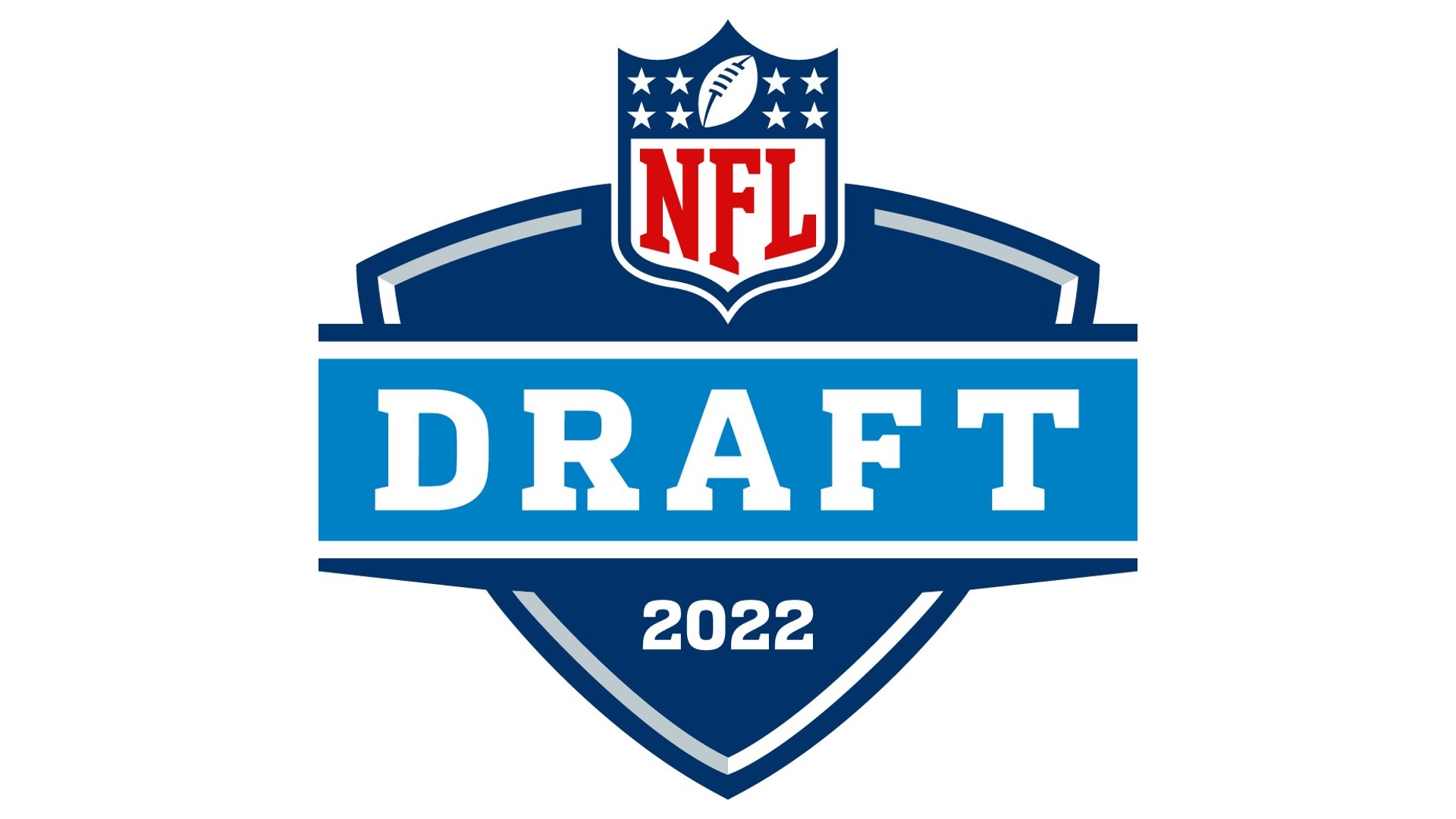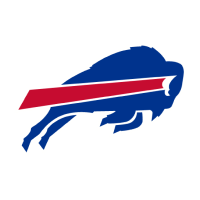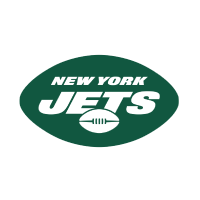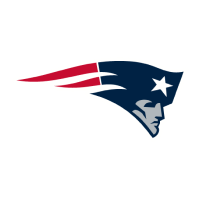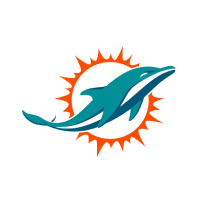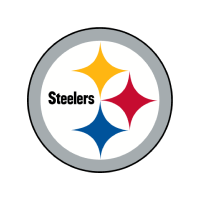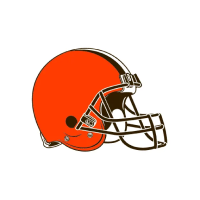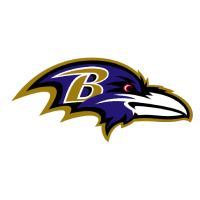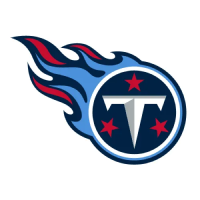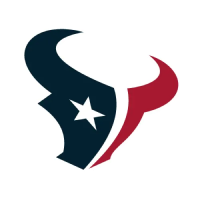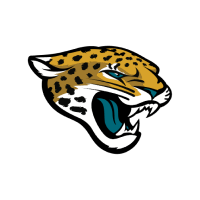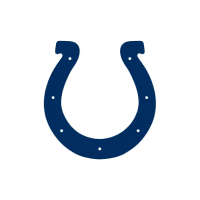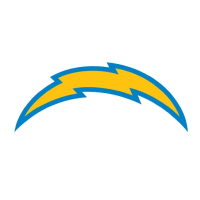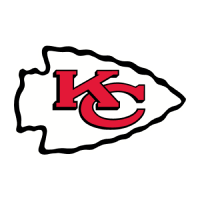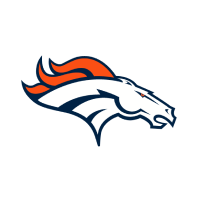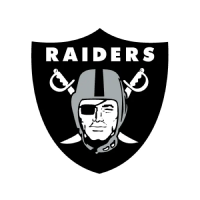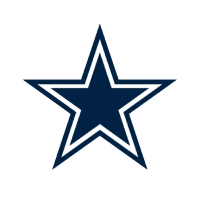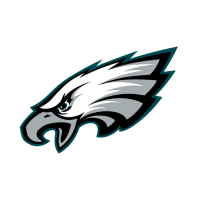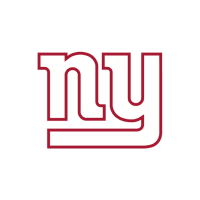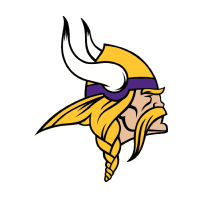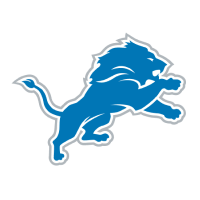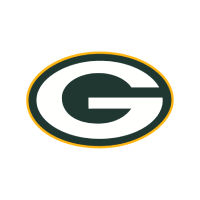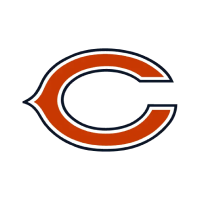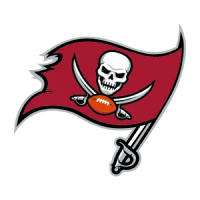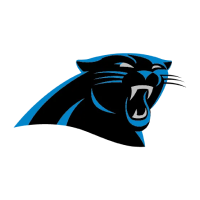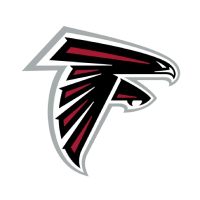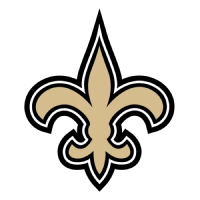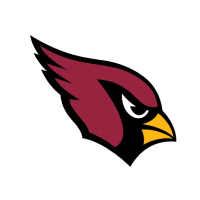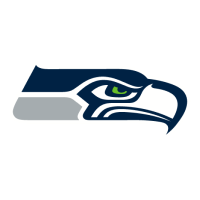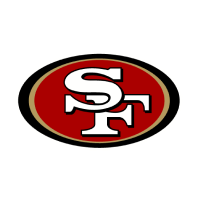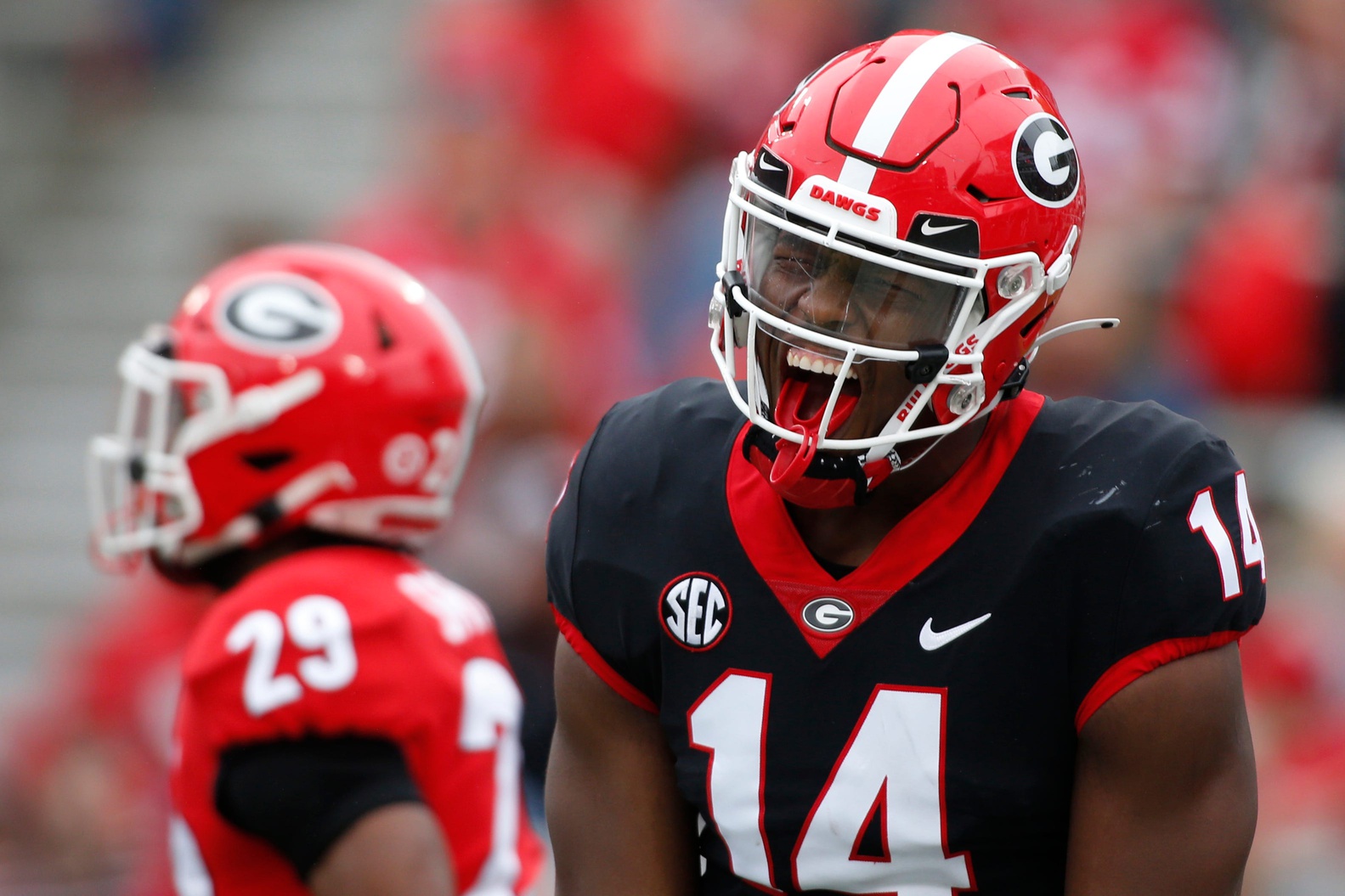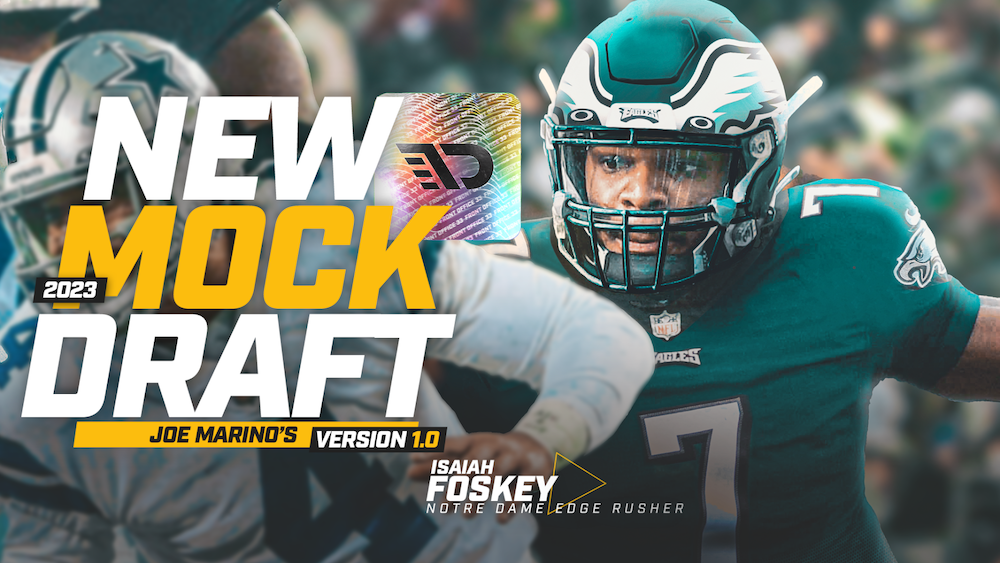ATLANTA FALCONS POST-DRAFT TEAM GUIDE
Any time a team makes a change at general manager and head coach, the first draft with that combination together is always interesting to learn about what they value and how they approach their initial set of draft picks to set the foundation moving forward. So what did general manager Terry Fontenot and head coach Arthur Smith accomplish in their first draft leading the Atlanta Falcons?
Let’s take a look back at the Falcons’ 2021 NFL Draft class:
Round 1: Kyle Pitts, TE, Florida
Going into the draft, the direction Atlanta went with the No. 4 selection was always going to reveal a lot about how the team viewed itself. Passing on the likes of Justin Fields and Mac Jones in favor of Pitts indicates the Falcons believe they can win now and make another run with Matt Ryan as the quarterback. Adding an elite talent like Pitts surely helps maximize Ryan’s ability to produce in the late stages of his career. Pitts is a unicorn. His blend of size, speed, quickness, ball skills, and route-running ability make him a nightmare matchup to defend. Putting him on the field with Julio Jones and Calvin Ridley presents a world of problems for defenses. Being the highest-drafted tight end in NFL history comes with lofty expectations, but Pitts has the skill set to deliver.
Round 2: Richie Grant, S, UCF
Saying goodbye to Damontae Kazee and Keanu Neal in free agency created a hole at safety for the Falcons, and modest investments in the likes of Erik Harris and Duron Harmon hardly fill the void—making Grant a logical selection. Grant was one of only a few true high-post safeties available in the 2021 draft that can serve as a true center fielder with top-notch ball skills. After defensive coordinator Dean Pees enjoyed the contributions of Kevin Byard in Tennessee, securing a player like Grant was necessary to fully unleash his hybrid defense and pressure packages. The Grant selection was the perfect marriage of need and value.
Round 3: Jalen Mayfield, OL, Michigan
Despite only playing in two games in 2020, I thought Mayfield demonstrated notable growth from the 2019 season. Mayfield is a massive and powerful blocker that fits well into Arthur Smith’s offense, where he has an opportunity to compete for the starting left guard position as a rookie. Mayfield is a mauler in the run game that is explosive into contact and has the functional strength to clear space. While he doesn’t have the ideal length to play offensive tackle in the NFL, he does have a stout and powerful anchor to absorb pass rushers on the interior. The key for Mayfield moving forward is becoming more consistent with his hand technique and developing his footwork to stay more square to blocks and play with better control. Mayfield’s poor showing at the Michigan pro day robbed some of his sizzle as a prospect, but his game tape revealed NFL-starter traits.
Round 4: Darren Hall, CB, San Diego State
The first of two corners selected by Atlanta in the 2021 NFL Draft, Hall was one of my favorite mid-round corner options in the draft and he has a chance to compete for the Falcons’ slot corner role early in his career. Hall is a physical and aggressive defender that thrives in press-man coverage, features outstanding ball skills, and is a terrific tackler. Ideally, he would have a bit more length, transitional quickness, and cleaner footwork, but his football intelligence and recovery speed make up for some of that—and those concerns can be mitigated by featuring him primarily in the slot. Hall has the ability to develop into an important subpackage defender for the Atlanta defense.
Round 4: Drew Dalman, IOL, Stanford
The departure of Alex Mack opens the door for Matt Hennessy to start at center for the Falcons and Dalman projects well to serve as his backup. While Dalman fails to impress with power, he is a technician that competes hard for body positioning and has ideal quickness for the position. He is an aggressive blocker that is more than willing to exchange power in the trenches despite his lean and narrow build. With the right bumpers in place at guard, Dalman profiles as a reasonable backup center, but I don’t foresee him offering much in the way of positional versatility.
Round 5: Ta’Quon Graham, IDL, Texas
Graham provides Atlanta with a long and explosive interior defensive lineman that has the physical traits needed to become a disruptive presence as part of the rotation. Graham was originally a defensive end for Texas but he bulked up and found a home as an interior lineman, where he projects best in the NFL. The quickness and twitch that Graham brings to the table make him appealing while he flashes good power on occasion. The key for Graham moving forward is learning how to apply his length and quickness to make more of an impact by developing a more nuanced and diverse pass-rush plan and becoming a more consistent processor that he can be in better positioning more often as a run defender. I like the developmental appeal with Graham because of his physical traits, but there is a curve ahead for him to crack the lineup.
Round 5: Adetokunbo Ogundeji, EDGE, Notre Dame
Ogundeji was a total steal for Atlanta and he had no business being available this late in the draft. While he was only a one-year starter at Notre Dame, he commanded plenty of playing time in 2018 and 2019 as a rotational defensive lineman. Ogundeji brings an exciting blend of length, power, heavy hands, and processing skills that gives him a chance to be a quality defender in the NFL. He projects well to playing 5-technique for the Falcons that can reduce inside and attack interior gaps. Ogundeji has room to grow when it comes to more consistently utilizing his length and playing with better leverage, but he fits well with a hybrid front defense.
Round 5: Avery Williams, CB, Boise State
A prospect every team should have prioritized on day three of the draft, the Falcons got a prize in Williams who is an elite special teams player. The two-time Mountain West Special Teams Player of the Year, Williams accounted for nine return touchdowns for his career at Boise State and five blocked kicks. While his bread and butter will always likely be on special teams as a four-phase standout, he also provides value as a slot defender where his competitive spirit, toughness, and quickness make him a pesky matchup for receivers. Players like Williams are what day three of the draft is made for and Atlanta is likely to enjoy meaningful returns in a variety of ways from Williams.
Round 6: Frank Darby, WR, Arizona State
Darby isn’t the most explosive receiver and he isn’t a dynamic route-runner, but he does have terrific ball skills that enabled him to average 19.7 yards per reception for his career at Arizona State. I had the chance to be around Darby at the House of Athlete Combine in South Florida in March and he was one of the most competitive, vocal, spirited, and high-energy people I’ve ever been around. His attitude and demeanor should translate well to special teams, blocking, and occasionally getting some targets down the field in the passing game for the Falcons. His limitations are notable, but there are ways he can help the team on the field and in the locker room.
How Did The Falcons Do?
Fontenot and Smith assembled a collection of highly competitive football players to build the roster with moving forward. Pitts has the potential to become one of the NFL’s most feared offensive weapons while Mayfield has year-one starting potential at guard. Atlanta added ball-hawking defensive backs in Grant and Hall who should both claim roles early on. Graham and Ogundeji bring length and athleticism to the Falcons’ defensive line rotation, while Williams and Darby should instantly become valuable special team contributors. If there is a criticism to be placed on the Falcons haul, it’s the lack of prioritization for premium positions with early selections and the decision to not secure the quarterback of the future may be one they regret. But focusing on what the team actually added and not factoring in some of the opportunity cost, there’s a lot to like about the players Atlanta added to the roster and the collective competitive toughness each one of them brings to the table.
Filed In
Related Articles
NFL Draft
Arik Gilbert Doesn’t Need Big Workload To Be A Top NFL Draft Pick
- Aug 22, 2022
NFL Draft
2023 NFL Mock Draft: Marino 1.0
- Aug 22, 2022
Written By
